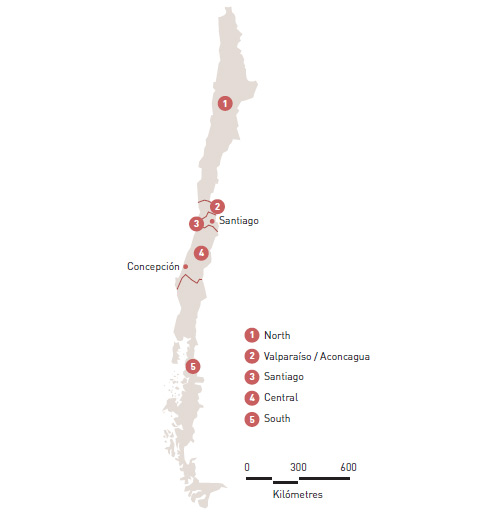Home > Articles > Insurance management of
catastrophe risk
Insurance management of catastrophe riskNATURAL PERILS
Juan Satrústegui. Natural Hazards MAPFRE RE - Madrid
After the Chile earthquake of 27/2/2010, some interesting thoughts are emerging on aspects relating to management of the catastrophe risk:
- The fault rupture occurred over an area measuring more than 400 x 100 kilometres. The Chilean insurance sector traditionally considers high-intensity earthquake scenarios, but for a more limited geographical area affected. It is common for many catastrophe reinsurance treaties to parameterise their capacity with respect to their aggregates in CRESTA zone III, or in zones II+III. Obviously, these are control zones, given that most of the country’s exposure is concentrated there. But it would not be inappropriate to operate with wider scenarios affecting not only this group of zones but also adjacent regions.
- Naturally, different portfolios of insured risks
have experienced different claims behaviour,
due amongst other things to their
composition in terms of class of business,
the exact geographical location of risks, the
type and year of construction of structures
and the type of insurance.
- Residential risks: although these generally show more homogeneous vulnerability, the year of construction and the type of insurance (more limited cover in some mortgage insurances) also affect the final amount of loss.
- Commercial risks: these are by definition more heterogeneous, given that their vulnerability is conditional upon the type of activity (structure and contents).
- Industrial and engineering risks: Regions VII and VIII are very industrial, and many mega-industries were therefore seriously affected by the earthquake. The main losses were due not only to damage to buildings and contents, caused either by the quake or the tsunami which lashed the coasts of Maule and Biobío, but also to Business Interruption (BI) cover. Some individual losses incurred by these industries -and they are still being quantified- are going to run into hundreds of millions of USD.
- Earthquake loss scenarios do not tend to contemplate the risk of tsunami and earthquake together in any country. Given the historical frequency of earthquakes with a magnitude greater than Mw 8 in Chile, it is likely that other major earthquakes happening in Chile in the future will also be accompanied by tsunamis.
- In general, the Chilean insurance market is improving the detail and processing of information on sums insured making up its earthquake exposure and sharing this with its reinsurers. Better information contributes to better assessment of the risk for everyone, especially using the catastrophe risk models available nowadays. In Europe -with the impetus from Solvency II- and also in various countries in Latin America, the guidelines on catastrophe reserving are accordingly being reviewed, with calls being made for models to be used to estimate the individual risk of each portfolio for a certain return period, and for them to be fed with detailed data on portfolios, so that they can be adapted as much as possible to the portfolios’ characteristics. In this way the high figure for aggregates currently allocated to CRESTA Zone VI (Floating) will also be reduced, with many risks instead being included in the actual zones where they are located.
- The Chilean Securities and Insurance Supervisory Authority’s regulations on the setting-up of earthquake catastrophe reserves by insurers date from 1993. These regulations require insurance companies to establish a reserve based on the amounts for the most exposed CRESTA zone, applying a PML of 10% for material damage and of 15% for engineering risks and BI covers, less reinsurance and plus a 10% safety margin. Although it is possible that these regulations will continue to be sufficient, making the most of the large quantity of figures available after this big earthquake, the sector is currently bringing the regulations up for discussion and the various agents are in talks to develop them further.

CRESTA map of earthquake zones in Chile
CRESTA- Catastrophe Risk Evaluating and Standardizing Target Accumulations
https:// www.cresta.org


